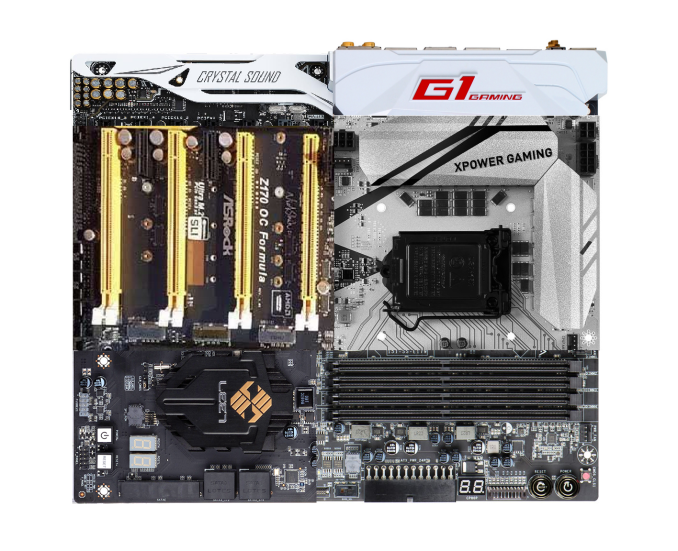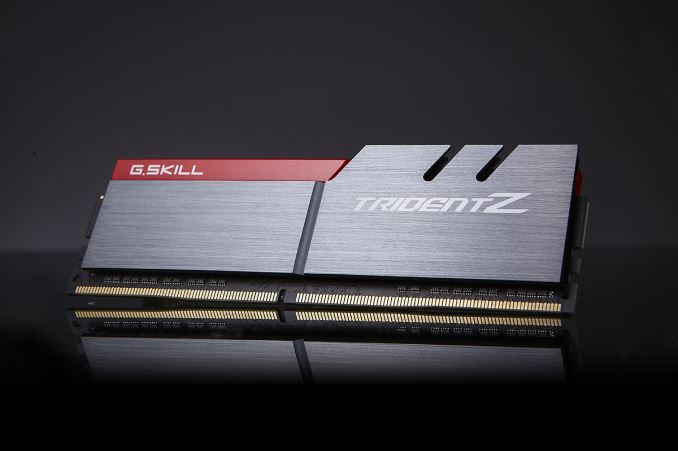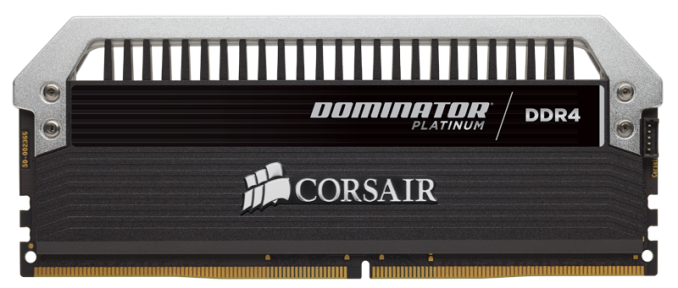The Intel 6th Gen Skylake Review: Core i7-6700K and i5-6600K Tested
by Ian Cutress on August 5, 2015 8:00 AM ESTAlso Launching Today: Z170 Motherboards, Dual Channel DDR4 Kits
The new Skylake processors are assigned a new socket – LGA1151. Intel’s policy since 2006 has been to maintain sockets for two generations and as a result moving from Broadwell to Skylake we were expecting the change. This means that Skylake processors will not work in LGA1150 based motherboards, i.e. those with Intel’s 8th and 9th generation chipsets. For Skylake we get the 100-series chipsets with additional functionality. Launching today in turn is the first member of the 100-series family, the overclocking-friendly Z170, with the other chipsets in the family to follow later in the year.
We have a large piece on the motherboards being released or talked about for Skylake, covering some 55+ products and the different variations within. The major motherboard manufacturers such as ASUS, GIGABYTE, ASRock, MSI, EVGA and a couple of others should all have a wide range ready to purchase on day one, although some models may be region specific.

The badly MSPaint’ed hybrid: MSI’s XPower Gaming Socket, GIGABYTE’s G1 Gaming IO panel, EVGA’s DRAM slots, ECS’s chipset, ASRock’s PCIe arrangement and ASUS’ Deluxe audio.
Here’s an amalgamation of some of the designs coming to end users, with almost all of them investing heavily in gaming brands with specific components to aid the user experience while gaming. Aesthetic designs are also going to be a focus of this generation, with some of the manufacturers moving into a different direction with their designs and trying some new color schemes. Some basic looking models will also be available.
Prices for Z170 motherboards will range from $80 all the way past $400+, depending on feature set and size. A number of motherboards above $150 will feature a couple USB 3.1 Gen 2 (10Gbps) ports, although you will have to check whether they are Type-A or Type-C. That being said, most motherboards with USB 3.1 will use both, but there are a select few that are C-only or A-only. Also over $150 we will see a lot of Intel’s new network controller, the I219-V, although the gaming lines might invest in Rivet Network’s Killer solution instead.
Intel is launching the Alpine Ridge controller at this time as well, which is said to support USB 3.1 Gen 2, Thunderbolt 3, HDMI 2.0, DisplayPort, and DockPort. According to our sources it would seem that GIGABYTE currently has an exclusive on this technology, and it will be used for their USB 3.1 Gen 2 ports on most motherboard models. Other functionality from the Alpine Ridge controller (TB3, HDMI 2.0) will be on a case-by-case basis depending on how the controller works in two different modes or if extra components are used. We are told that Alpine Ridge costs similarly to the ASMedia ASM1142 controller, but will enable two USB 3.1 Gen 2 ports at 10 Gbps simultaneously as it uses four PCIe lanes from the chipset.
We will go more into the 100-series chipset in the next page, but it is worth mentioning briefly here that the speed between the CPU and the chipset has increased from DMI 2.0 (5 GT/s, 2GB/sec) to DMI 3.0 (8 GT/s, 3.93GB/sec), and that the chipset has a new high speed hub (HSIO) that allows 26 lanes to be used from it although some lanes are limited (e.g. 20 PCIe 3.0 lanes maximum split into five x4 controllers). Intel’s Rapid Storage Technology is upgraded as well to give three PCIe drives access to its features as long as they are on the correct HSIO ports.
DRAM: The March to DDR4
In the world of DRAM for personal computers, DDR3 is currently king. Having been the main standard since 2007, you would be hard pressed to find a mainstream or low end platform sold that did not require access to DDR3. That changed in the enthusiast segment last year with the launch of Haswell-E which also introduced DDR4 at a high premium. For Haswell-E there was no crossover – you had no choice but to use DDR4 (unless you might be a million-unit customer).
Because the consumers and consumer product OEMs are more price sensitive, DDR4 will be a slower transition. There is precedent here in that the move from DDR2 to DDR3 saw a generation of processors that supported both standards and it was up to the motherboard manufacturer to design for it. In this transition, Skylake processors will support both DDR3L and DDR4 modules, with a few caveats.
Caveat number one is that initially, only DDR4 motherboards will be on the market. So if you upgrade now, DDR4 needs to be on the shopping list as well. We have had word of some DDR3L-only motherboards coming, as well as combo boards with DDR3L and DDR4 slots on board. Caveat one-point-five, you can use either DDR3L or DDR4, but not both at the same time.
Caveat number two, DDR3L is different to DDR3 as it operates at a lower voltage. This means that the memory controllers on Skylake most likely have a combined voltage domain, and regular DDR3 might not work (in fact early testing suggests not without reducing the voltage). Very few people currently own DDR3L DIMMs, so the likelihood of a user performing an upgrade while reusing their RAM might be slim.
Caveat number three: prices of DDR4 have dropped significantly since last year, and there is only a small premium over DDR3. The benefits of DDR4 include a lower operating voltage, a more stable design, and the ability to purchase 16GB modules with ease. That means that a Skylake platform will happily take 64GB of memory.
With that last point, we should point out that Skylake is a dual memory channel architecture, supporting two memory modules per channel. This gives a maximum of four DDR4 tests, and 4x16 = 64GB maximum.
We have been told that Skylake’s memory controller, compared to previous generations, is absolutely golden at higher speed memory support. By default Skylake supports the JEDEC standard for DDR4, 2133 MT/s at a latency of 15-15-15, but the overclocking guides we have received suggests that all processors should be able to reach DDR4-3200 relatively comfortably, with a few processors in the right motherboards going for DDR4-4000. While this should bode well for integrated graphics users, those high end kits are typically very expensive.
We currently have dual channel kits in to test from a number of the DRAM companies, and plan on performing a memory scaling article within the next few weeks to see how exactly performance might scale on Skylake. Though in the meantime, as part of this review, we were able to source a closed beta variant of a combination DDR3L/DDR4 motherboard for Skylake and have included a test comparing the two.












477 Comments
View All Comments
experttech - Monday, August 10, 2015 - link
I have a Sandy Bridge 2600K running on a Asus H67 EVO motherboard, so not overclocked. My motherboard is slowly dying. First the obboard sound died, then the reset is now working. Now I am wondering whether to upgrade the motherboard to an overclockable Sandy Bridge motherboard or jump the wagon to 6700K. I mostly do Video Editing and Encoding, no gaming. or wait till the motherboard dies completely and hope SkyLake E or Kaby Lake is out by that time. Any suggestions?sonny73n - Wednesday, August 12, 2015 - link
2600K is an excellent chip. I'd rather have the i7-2600K than the new i5-6600K. You should get a new MB Z77 but there's not many still available now. I only saw 1 Z77 on Newegg, it's the Asrock and I think it costs around $160. You can also find used Z68 and Z77 MBs on Amazon or eBay but I wouldn't recommend it. Video editing with the 2600K is a piece of cake and x264 encoding is not bad either. Keep the chip and spend your money on a good video card and a nice 4K ips monitor.experttech - Thursday, August 13, 2015 - link
Thanks for your reply. I too realized the same, I did notice the only Z77 Asrock motherboard (which is an excellent motherboard by the way) but for the price, I can't justify buying it especially since so many options are available in the new platform. One interesting thing I noticed is that with the newer instruction sets, my laptop with i5 5200U actually renders some frames very fast but overall, my i7 2600K renders the finished movie quicker. So though there are IPC improvements in the newer chips, the basic features (performance, mutithreading etc) haven't changed night and day. Of course I am comparing a Sandy bridge i7 to a lower clocked Broadwell i5 but I am not sure if there will be a tangible difference upgrading to SkyLake as of now. So you are right my friend and thanks for the advice!I do have a 1440p monitor and its amazing how much real estate you get going from 1080p. Definitely one of the best upgrades I made. I will look into a 4K monitor as they have come down quite a bit in price.
phillipstuerzl - Monday, August 10, 2015 - link
Hi,On your 5th page, under Test Setup, you list the i5 6600K as being 4C/8T. This is incorrect. It is not hyperthreaded, and only 4C/4T.
Great article!
Ryan Smith - Tuesday, August 11, 2015 - link
Thanks!DannyDan - Monday, August 10, 2015 - link
So do we expect the 1151 socket to have a few good upgraded processors down the road? It really sucked getting a socket 1156 CPU.mdw9604 - Tuesday, August 11, 2015 - link
Moore's law is a crock of $%!24. 7 years later and Intel still hasn't doubled the performance the i7 870. Core for Core.The may be able to cram more transistors into a smaller space, but doesn't mean better performance.
Oxford Guy - Thursday, August 13, 2015 - link
It's funny how every time it fails people say it is being "adjusted", "extended", "massaged", "modified", or something like that. Either it works or it doesn't. It should be called Moore's Heuristic = "process density increases over time" (duh).ES_Revenge - Saturday, August 15, 2015 - link
You misunderstand Moore's Law. Moore's law has nothing [necessarily] to do with performance. Moore's law only states that the number of transistors possible in a given space will double every two years. It also doesn't just apply to Intel and mainstream CPUs, it applies to *all* integrated circuits. Everything from CPUs to EEPROMS, to SOCs, to microcontrollers, to image sensors...etc. these things are all included as they're all ICs. So, on average, it still holds AFAIK.Whether or not a 14nm chip outperforms, or how much it outperforms, a 28nm one (there wasn't one for Intel, but Sandy was 32nm) is NOT what Moore's Law predicts. Other people have construed this "Law" to mean things about performance (including some guy at Intel that once said performance would double every xx months--totally wrong and not what Moore's Law states anyway), but it's not about performance and certainly not just about desktop CPUs.
You can't say something is a "crock of $%!24" if you don't know what it's about to begin with.
Kutark - Thursday, August 20, 2015 - link
Unfortunately, whether or not someone understands something has never stopped someone from speaking their mind on it. Hell, look at pretty much every election under the sun. The vast majority of people who vote in them couldn't even give you a basic rundown of the issues at hand, yet they sure do have an opinion on it...